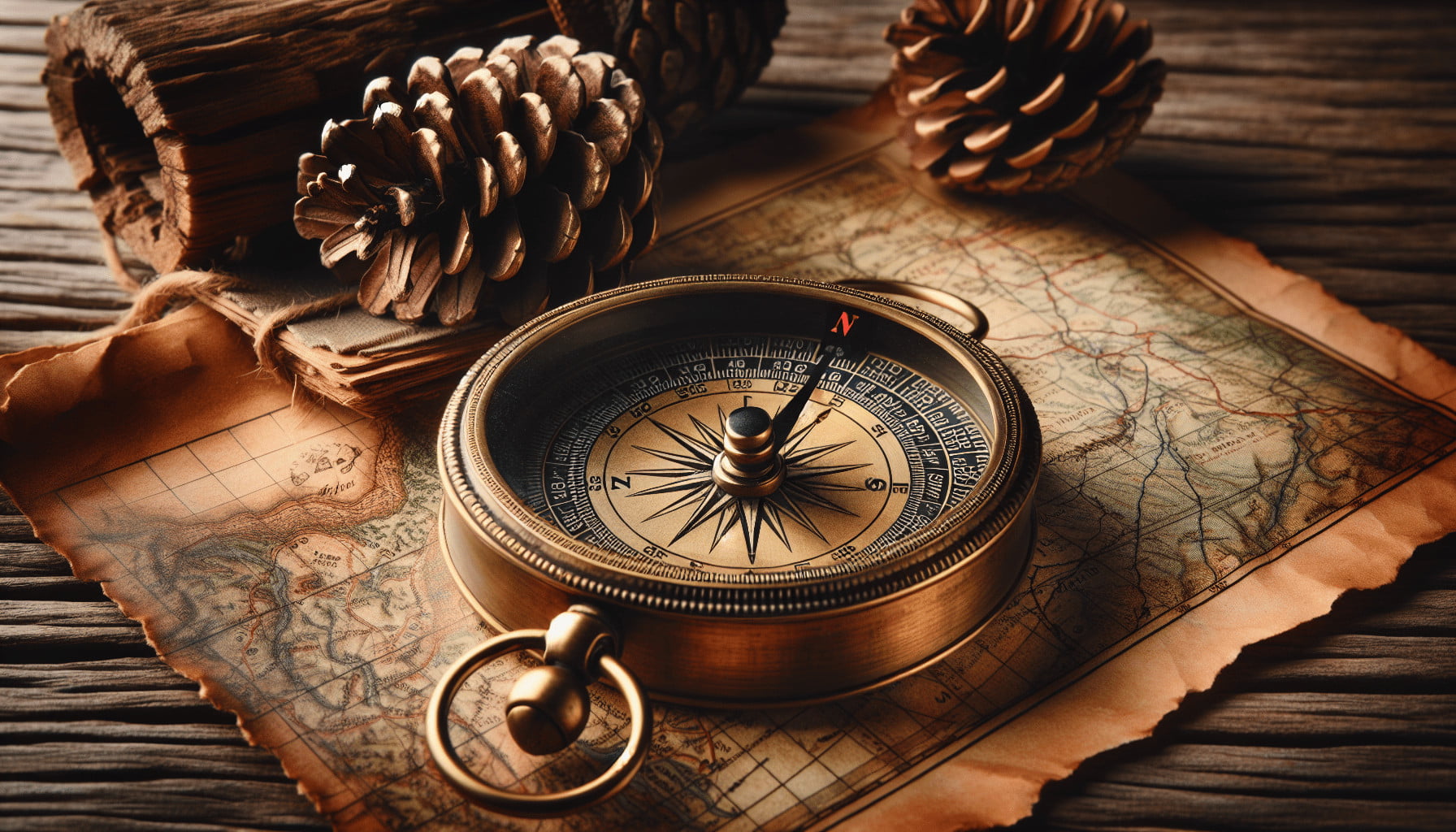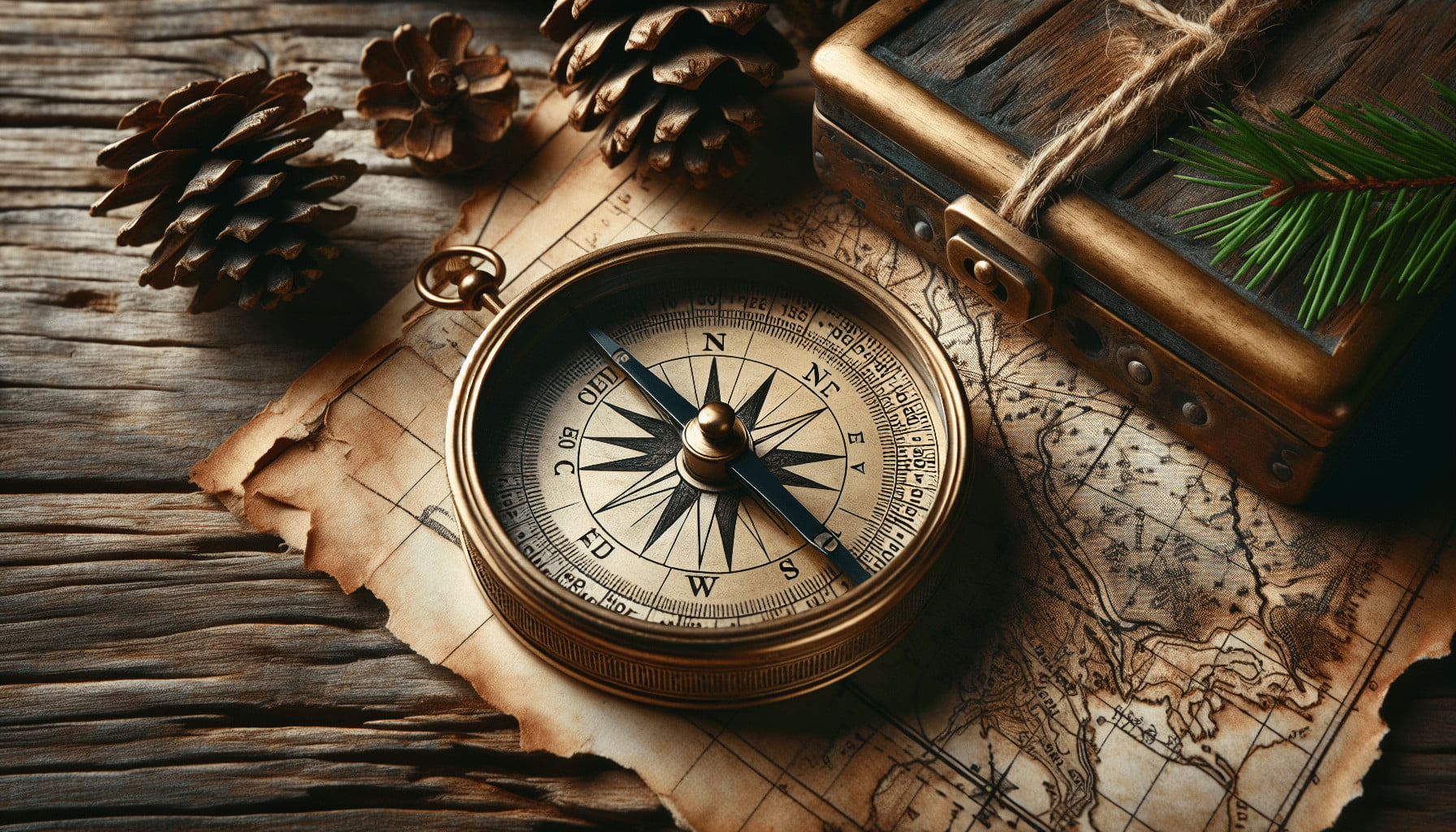Navigating the wilderness is a thrilling adventure, but having the right compass can be the difference between getting lost and finding your way with confidence. In “Best Compasses For Wilderness Navigation In Various Conditions,” you’ll discover how to choose the perfect tool for your journey, whether you’re facing dense forests, mountainous terrains, or unpredictable weather.
This comprehensive guide breaks down the top compasses on the market, analyzing their features and suitability for various conditions, ensuring you’re well-prepared for any challenge. By the end of this article, you’ll not only know which compass best fits your needs but also gain a deeper understanding of navigation techniques and the impact of environmental factors on your travels.
Overview
In our technology-driven world, it might be easy to overlook traditional navigation tools like compasses. However, for wilderness explorers, these timeless devices remain indispensable. Whether you’re hiking, camping, or embarking on an expedition, understanding the best compasses for various conditions can be an absolute game-changer.
Importance of a Reliable Compass
A reliable compass helps you to navigate unfamiliar terrain, making sure you always know your location and heading. Unlike GPS devices, which can run out of battery or fail in areas with poor signal, a compass offers a low-tech, yet highly dependable solution. Knowing how to use one effectively can not only enhance your outdoor experience but also ensure you return safely.
Types of Compasses
Selecting the right compass for your adventure requires understanding the different types and their use cases. Let’s take a closer look at a few key varieties:
Baseplate Compasses
Baseplate compasses are the go-to choice for many hikers and adventurers. These compasses feature a rectangular, transparent baseplate that makes it easy to read maps and navigate through complex terrain.
Lensatic Compasses
Often used by the military, lensatic compasses offer extreme precision. They include a magnifying lens to read the dial, and their sturdy design makes them ideal for rough conditions.
Digital Compasses
For tech enthusiasts, digital compasses present a more modern option. These devices often come integrated with other navigational tools and can provide more precise readings. However, they are dependent on batteries and may lack the rugged durability of traditional compasses.

Best Compasses for Different Conditions
Choosing the best compass often depends on the specific conditions you’ll face. Let’s break it down by typical scenarios:
Hiking in Dense Forests
For navigating thick, forested areas, a baseplate compass with a sighting mirror can be extremely useful. This type generally offers a high degree of accuracy and usability.
| Compass Model | Features | Pros | Cons |
|---|---|---|---|
| Suunto MC-2 | Sighting mirror, adjustable declination | High accuracy, easy to use with maps | Can be bulky |
| Silva Ranger 515 | Clinometer, sighting mirror | Versatile, durable | Slightly more expensive |
Trekking in Open Terrain
When exploring open terrain, a lensatic compass may serve you best. These compasses are built for high precision and can handle harsh environments.
| Compass Model | Features | Pros | Cons |
|---|---|---|---|
| Cammenga 3H | Tritium illumination, robust frame | Durable, great in low-light conditions | Heavier than other compasses |
| Brunton TruArc 20 | Global needle, sighting mirror | Versatile, lightweight | Can be complex for beginners |
Mountain Adventures
For mountaineering, having a compass with a clinometer can help you assess slopes and potential avalanche risks. Here are some top picks:
| Compass Model | Features | Pros | Cons |
|---|---|---|---|
| Suunto MC-2G IN | Global needle, clinometer | High accuracy, functions globally | Expensive |
| Silva Expedition S | Luminous markings, clinometer | Reliable in extreme conditions | Heavier, bulkier |
Buying Guide: What to Look For
When choosing the best compass for wilderness navigation, a few key features should be at the top of your list:
Accuracy
Accuracy is paramount. You need a compass that provides reliable readings, especially when you’re deep in the wilderness with no signal for GPS backup.
Durability
The compass you choose should be rugged enough to withstand the conditions you’re likely to encounter. Look for features like sturdy housing and waterproofing.
Usability
Ease of use is another important consideration. Features such as sighting mirrors, adjustable declination, and clear markings can make a significant difference in usability, especially when you’re in challenging conditions.
Additional Features
Additional features like clinometers, global needles, and luminous markings can add versatility to your compass. Evaluate whether these features align with your needs.

Evaluating Different Viewpoints
When discussing the best compasses for wilderness navigation, opinions can vary widely. Traditionalists often advocate for baseplate and lensatic compasses due to their reliability and ease of use in rugged conditions. In contrast, technology enthusiasts might favor digital compasses for their multi-functionality and advanced features.
Traditional vs. Digital
While digital compasses provide additional functionalities, traditional compasses remain highly reliable, especially in extreme weather where electronic devices can fail. Each has its pros and cons, and the best choice depends largely on personal preference and specific use cases.
Price vs. Performance
Expensive doesn’t always mean better. Some affordable compasses offer excellent performance and durability, making them suitable for most adventures. On the other hand, higher-end models may provide advanced features that justify the extra cost for serious adventurers.
Expert Opinions
Many experts champion the use of a baseplate compass with a sighting mirror for general navigation. It strikes a balance between usability, accuracy, and durability. However, for more specialized needs such as mountaineering and military use, lensatic and clinometer-equipped compasses are often recommended.
Future Trends in Compass Technology
As technology continues to advance, we can expect further integration of digital features in traditional compasses. Future models might feature enhanced GPS integration, more accurate digital readouts, and improved battery life.
Enhanced Accuracy
Technological improvements could lead to even more precise navigation tools. Digital compasses may incorporate additional sensors and technologies to provide highly accurate readings.
Durability Innovations
Expect robust innovations to make compasses even more durable. This might include better waterproofing, shock resistance, and materials designed to withstand extreme conditions.
Multifunctional Devices
Look out for compasses that incorporate more functionality. Whether it’s weather updates, GPS navigation, or emergency alerts, future devices may offer a suite of tools in a single package.
Broader Implications
The relevance of compasses extends beyond personal use. Knowing how to navigate with a compass can be a critical skill in many situations.
Safety
For individuals involved in outdoor activities, having a reliable compass can significantly enhance safety. It ensures you can find your way even when digital devices fail.
Education
Teaching navigation skills using traditional tools is invaluable. It promotes an understanding of geography, enhances problem-solving skills, and can be incredibly rewarding.
Sustainability
Reliance on low-tech tools like compasses reduces the need for battery-dependent devices, promoting a more sustainable way to explore the outdoors.
Summary
Choosing the right compass for wilderness navigation is an essential part of your outdoor gear planning. Whether you’re navigating dense forests, trekking through open terrain, or climbing mountains, having the right tool can make your adventure safer and more enjoyable.
We’ve discussed the different types of compasses, their suitability for various conditions, and provided a buying guide to help you make an informed decision. By weighing different viewpoints, looking ahead at future trends, and considering the broader implications, you’re now equipped with comprehensive knowledge on this age-old, yet ever-relevant navigation tool.
Final Thoughts
So, next time you plan your outdoor adventure, ask yourself: Do I have the right compass for the job? Whether you choose a trusty baseplate, a precise lensatic, or a feature-rich digital compass, ensuring you have a reliable navigation tool can transform your wilderness experience from potentially perilous to perfectly mapped out. Happy navigating!
